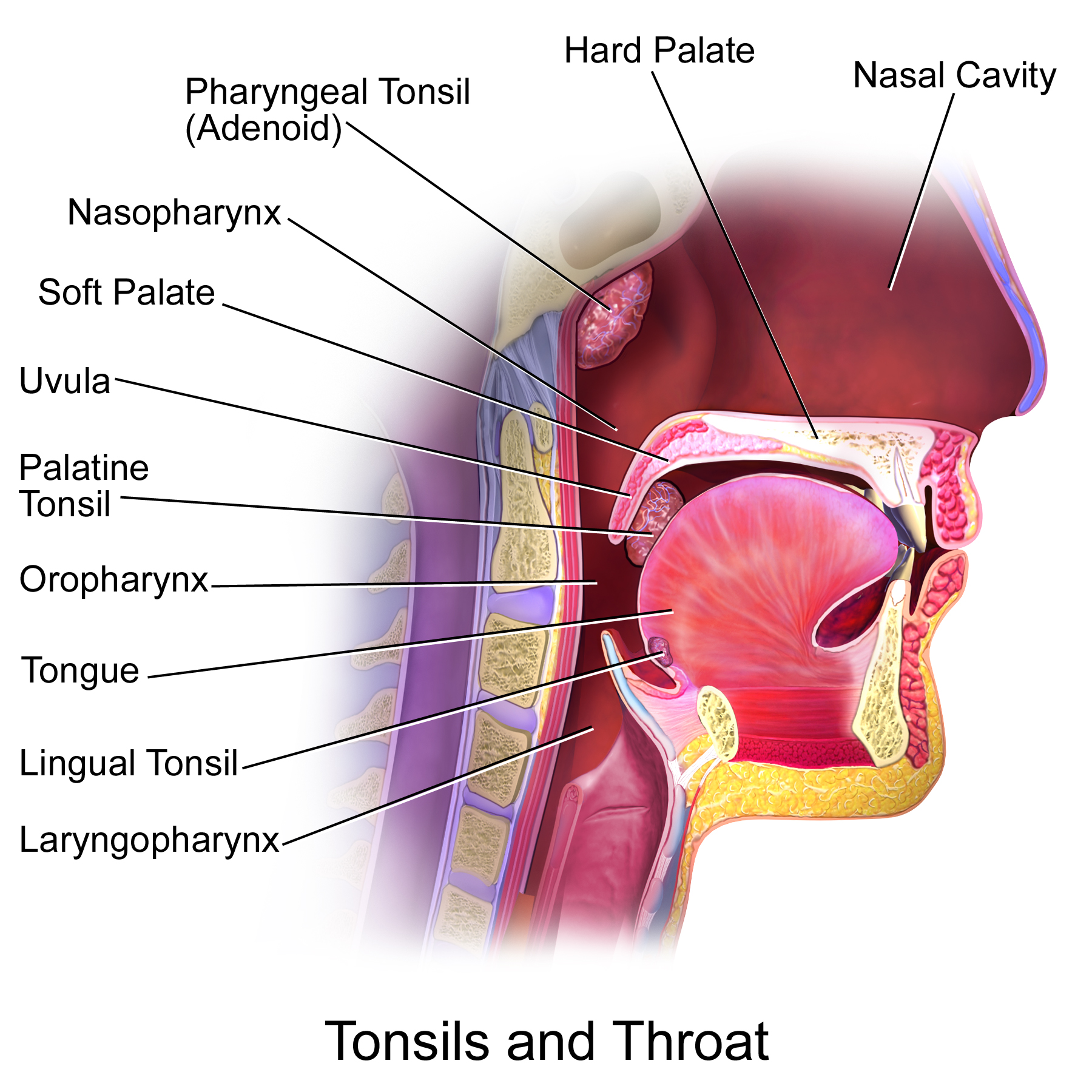Lingual tonsils on:
[Wikipedia]
[Google]
[Amazon]
The lingual tonsils are a collection of lymphatic tissue located in the lamina propria of the root of the
 Like other lymphatic tissues, the function of lingual tonsils is to prevent infections. These tonsils contain B and T lymphocytes which get activated when harmful bacteria and viruses come in contact with tonsils. B lymphocytes kill pathogens by producing antibodies against them, while T lymphocytes directly kill them by engulfing them or indirectly by stimulating other cells of the immune system.
Like other lymphatic tissues, the function of lingual tonsils is to prevent infections. These tonsils contain B and T lymphocytes which get activated when harmful bacteria and viruses come in contact with tonsils. B lymphocytes kill pathogens by producing antibodies against them, while T lymphocytes directly kill them by engulfing them or indirectly by stimulating other cells of the immune system.
File:Slide1sss.JPG, Lingual tonsil
File:Slide7ttt.JPG, Lingual tonsil
File:Slide12uuu.JPG, Lingual tonsils
Pictures at usc.edu
* * * (labeled as 'lymphoid tissue')]
Lingual Tonsil
tongue
The tongue is a muscular organ in the mouth of a typical tetrapod. It manipulates food for mastication and swallowing as part of the digestive process, and is the primary organ of taste. The tongue's upper surface (dorsum) is covered by taste ...
. This lymphatic tissue consists of the lymphatic nodules rich in cells of the immune system
The immune system is a network of biological processes that protects an organism from diseases. It detects and responds to a wide variety of pathogens, from viruses to parasitic worms, as well as cancer cells and objects such as wood splinte ...
(immunocyte
White blood cells, also called leukocytes or leucocytes, are the cells of the immune system that are involved in protecting the body against both infectious disease and foreign invaders. All white blood cells are produced and derived from multi ...
s). The immunocytes initiate the immune response when the lingual tonsils get in contact with invading microorganism
A microorganism, or microbe,, ''mikros'', "small") and ''organism'' from the el, ὀργανισμός, ''organismós'', "organism"). It is usually written as a single word but is sometimes hyphenated (''micro-organism''), especially in old ...
s (pathogenic
In biology, a pathogen ( el, πάθος, "suffering", "passion" and , "producer of") in the oldest and broadest sense, is any organism or agent that can produce disease. A pathogen may also be referred to as an infectious agent, or simply a ger ...
bacteria
Bacteria (; singular: bacterium) are ubiquitous, mostly free-living organisms often consisting of one biological cell. They constitute a large domain of prokaryotic microorganisms. Typically a few micrometres in length, bacteria were am ...
, viruses
A virus is a submicroscopic infectious agent that replicates only inside the living cells of an organism. Viruses infect all life forms, from animals and plants to microorganisms, including bacteria and archaea.
Since Dmitri Ivanovsky's ...
or parasites).
Structure
Microanatomy
Lingual tonsils are covered externally by stratified squamous nonkeratinized epithelium that invaginates inward forming crypts. Beneath the epithelium is a layer of lymphoid nodules containing lymphocytes. Mucous glands located at the root of tongue are drained through several ducts into the crypt of lingual tonsils. Secretions of these mucous glands keep the crypt clean and free of any debris.Blood supply
Lingual tonsils are located on posterior aspect of tongue which is supplied through: * Lingual artery, branch of external carotid artery * Tonsillar branch of facial artery *Ascending and descending palatine arteries * Ascending pharyngeal branch of external carotid arteryNerve supply
Lingual tonsils are innervated by tonsillar nerves from the tonsilar plexus, formed by the glossopharyngeal and vagus nerves.Function
 Like other lymphatic tissues, the function of lingual tonsils is to prevent infections. These tonsils contain B and T lymphocytes which get activated when harmful bacteria and viruses come in contact with tonsils. B lymphocytes kill pathogens by producing antibodies against them, while T lymphocytes directly kill them by engulfing them or indirectly by stimulating other cells of the immune system.
Like other lymphatic tissues, the function of lingual tonsils is to prevent infections. These tonsils contain B and T lymphocytes which get activated when harmful bacteria and viruses come in contact with tonsils. B lymphocytes kill pathogens by producing antibodies against them, while T lymphocytes directly kill them by engulfing them or indirectly by stimulating other cells of the immune system.
Clinical significance
Cancer
Squamous cell
Epithelium or epithelial tissue is one of the four basic types of animal tissue, along with connective tissue, muscle tissue and nervous tissue. It is a thin, continuous, protective layer of compactly packed cells with a little intercellula ...
carcinoma is a type of neoplasm that can affect lingual tonsils.
Sleep apnea
Enlarged or hypertrophic lingual tonsils have the potential to cause or exacerbate sleep apnea.Additional images
External links
Pictures at usc.edu
* * * (labeled as 'lymphoid tissue')]
Lingual Tonsil
References
{{Authority control Lymphatics of the head and neck Tongue Tonsil